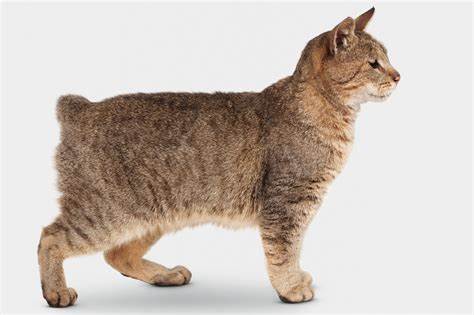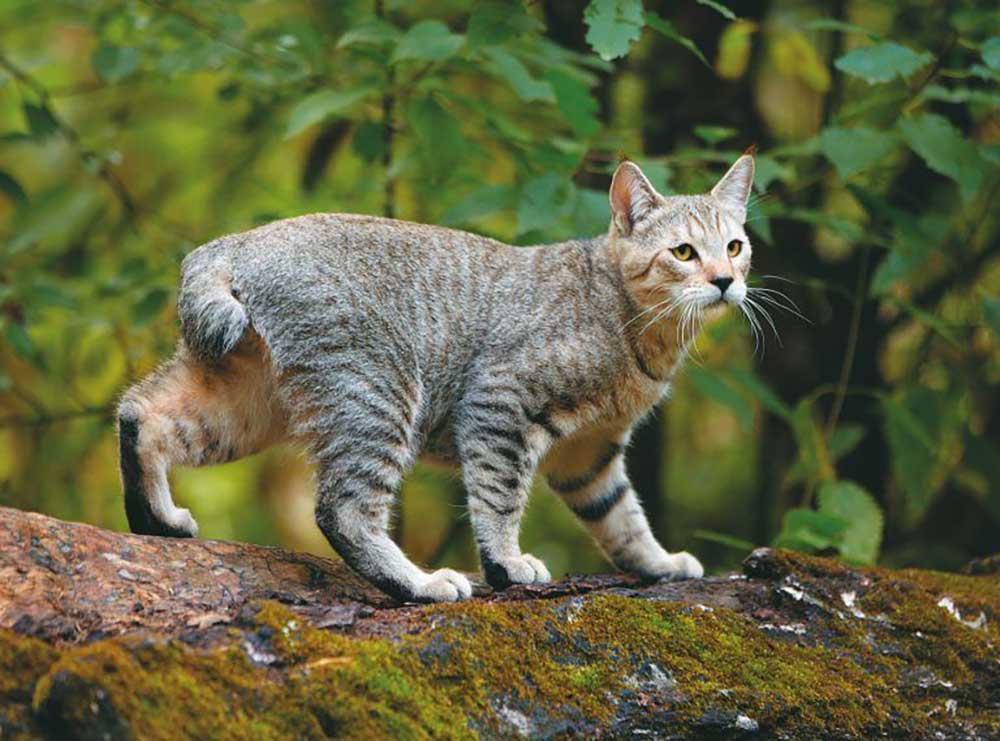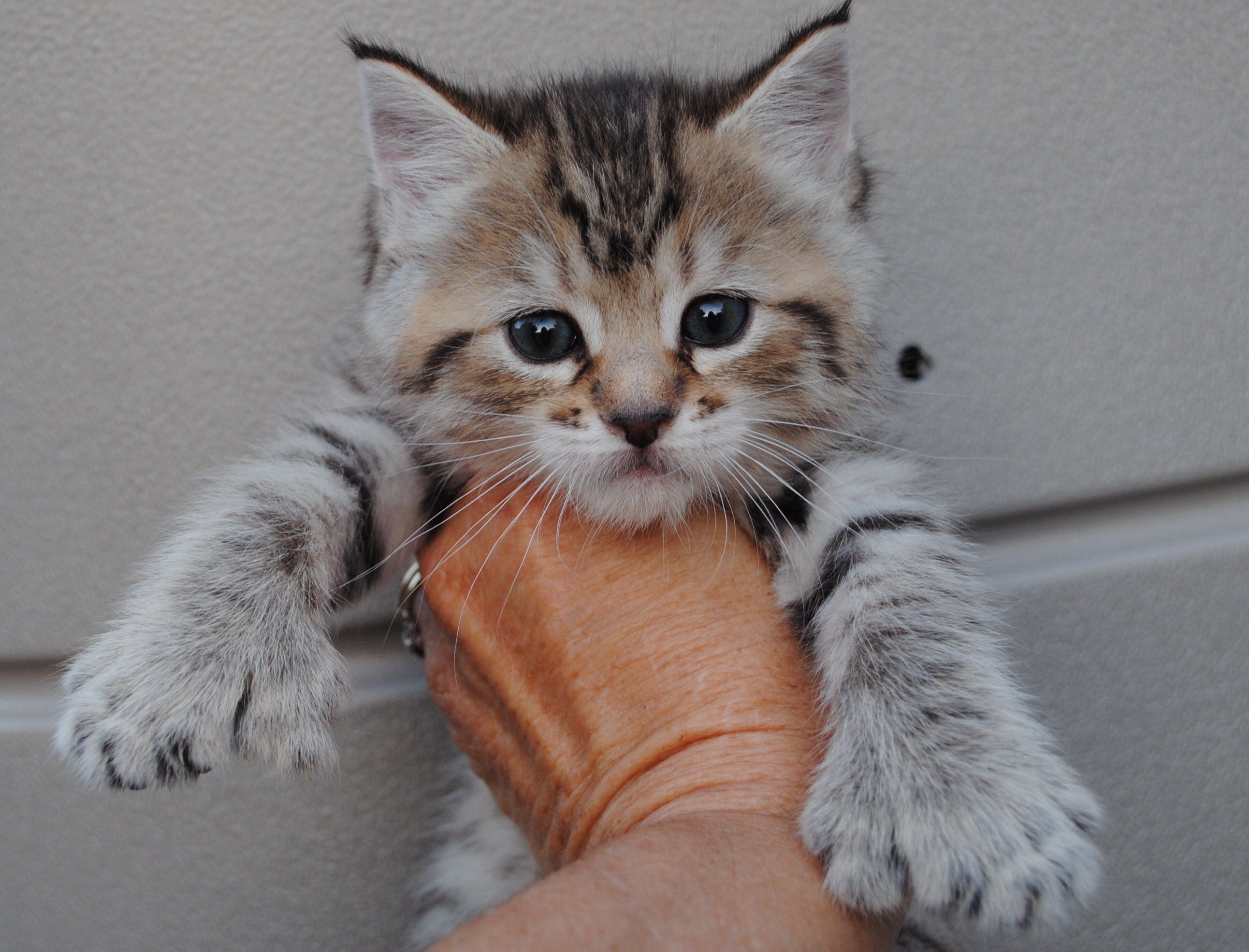
The Pixie-bob is a unique and wild-looking domestic cat breed that originated in the United States in the 1980s. The breed was developed by Carol Ann Brewer, who found a large, bobtailed cat that resembled a bobcat. She bred him with another naturally bobtailed cat, resulting in a kitten named Pixie, the foundation of the breed.
Despite their wild bobcat-like appearance, Pixie-bobs are entirely domestic cats with no confirmed wild ancestry. They were officially recognized by The International Cat Association (TICA) in 1995 and have since gained popularity for their dog-like personality, intelligence, and affectionate nature.
The Pixie-bob is especially popular among cat enthusiasts who appreciate exotic-looking domestic breeds. Their unique appearance, gentle temperament, and strong loyalty to their owners have made them a favorite in the United States and Europe.
The Pixie-bob is a medium-to-large muscular cat with a bobbed tail and a rugged, wild appearance.
• Coat: Short or long-haired, thick and weather-resistant with a slightly rough texture.
• Colors: Typically brown-spotted tabby, often with a mottled or ticked look for added camouflage.
• Size: Medium to large, weighing between 8 to 17 pounds. Males tend to be larger than females.
• Head & Expression: Broad, pear-shaped head with a heavy brow and bushy eyebrows.
• Eyes: Large, expressive, and golden to green in color, giving an intense gaze.
• Ears: Medium-sized, often with lynx-like tufts at the tips.
• Tail: Naturally bobbed, ranging from a few inches to about half the usual tail length. Some Pixie-bobs may have a longer tail.
• Body: Sturdy, well-muscled, and built for agility and strength.
The Pixie-bob is known for its intelligent, loyal, and dog-like personality, making it an ideal companion for active households.
• Highly Affectionate: Forms deep bonds with its owners and enjoys companionship.
• Loyal and Protective: Follows its humans around the house like a dog and may act as a protector.
• Quiet but Communicative: Not very vocal, but communicates with chirps, trills, and soft growls.
• Playful and Energetic: Enjoys playing fetch, climbing, and exploring.
• Intelligent and Trainable: Learns commands, tricks, and can be leash-trained.

For those looking for a wild-looking, affectionate, and intelligent cat, the Pixie-bob is an excellent choice.
• Perfect for Active Families: Enjoys interactive play and companionship.
• Low Grooming Needs: Short-haired variety requires minimal brushing, while long-haired Pixie-bobs need weekly grooming.
• Dog-Like Personality: Enjoys fetch, leash-walking, and following owners around.
• Striking Appearance: Their bobbed tail, wild coat, and lynx-tipped ears create an exotic look.
• Highly Intelligent and Loyal: A devoted and trainable companion.
The Pixie-bob requires regular exercise, socialization, and a high-protein diet to thrive.
• Grooming:
o Short-haired Pixie-bobs need occasional brushing.
o Long-haired Pixie-bobs require weekly grooming to prevent mats.
• Exercise: Needs daily physical activity, including climbing, fetch, and interactive play.
• Mental Stimulation: Thrives on puzzle toys, training exercises, and hunting-style games.
• Nutrition: A high-protein diet supports their muscle tone and energy levels.
• Companionship: Prefers interactive households where they get plenty of attention.
The Pixie-bob is generally a healthy breed, but due to its genetic background, some concerns include:
• Polydactylism: Many Pixie-bobs are born with extra toes, which is not harmful but requires regular nail trimming.
• Hypertrophic Cardiomyopathy (HCM): A heart condition that should be monitored in breeding lines.
• Obesity Prevention: Regular activity is important to maintain a healthy weight.
• Joint Issues: Some Pixie-bobs have a slightly different skeletal structure, which should be monitored as they age.

Compared to the Maine Coon, the Pixie-bob is smaller but has a more wild and stocky appearance. Unlike the Savannah Cat, which has serval ancestry, the Pixie-bob is fully domestic and has a calmer temperament.
Compared to the American Bobtail, which also has a bobbed tail and rugged coat, the Pixie-bob is larger, more muscular, and has a more defined wildcat look.
The Pixie-bob is perfect for cat lovers who want an active, loyal, and exotic-looking pet. If you enjoy interactive play, training, and a social cat that behaves like a dog, the Pixie-bob will be a wonderful choice.
However, if you prefer a quiet, independent, or low-energy cat, this breed may not be the best fit.
United Pet Club is here to help you find the perfect Pixie-bob companion. Whether you're looking to adopt or connect with trusted breeders, we provide valuable resources to guide you every step of the way.
Explore our platform to learn more about Pixie-bob cats, their history, and how to care for them. Contact United Pet Club today to start your journey with this fascinating and affectionate feline!